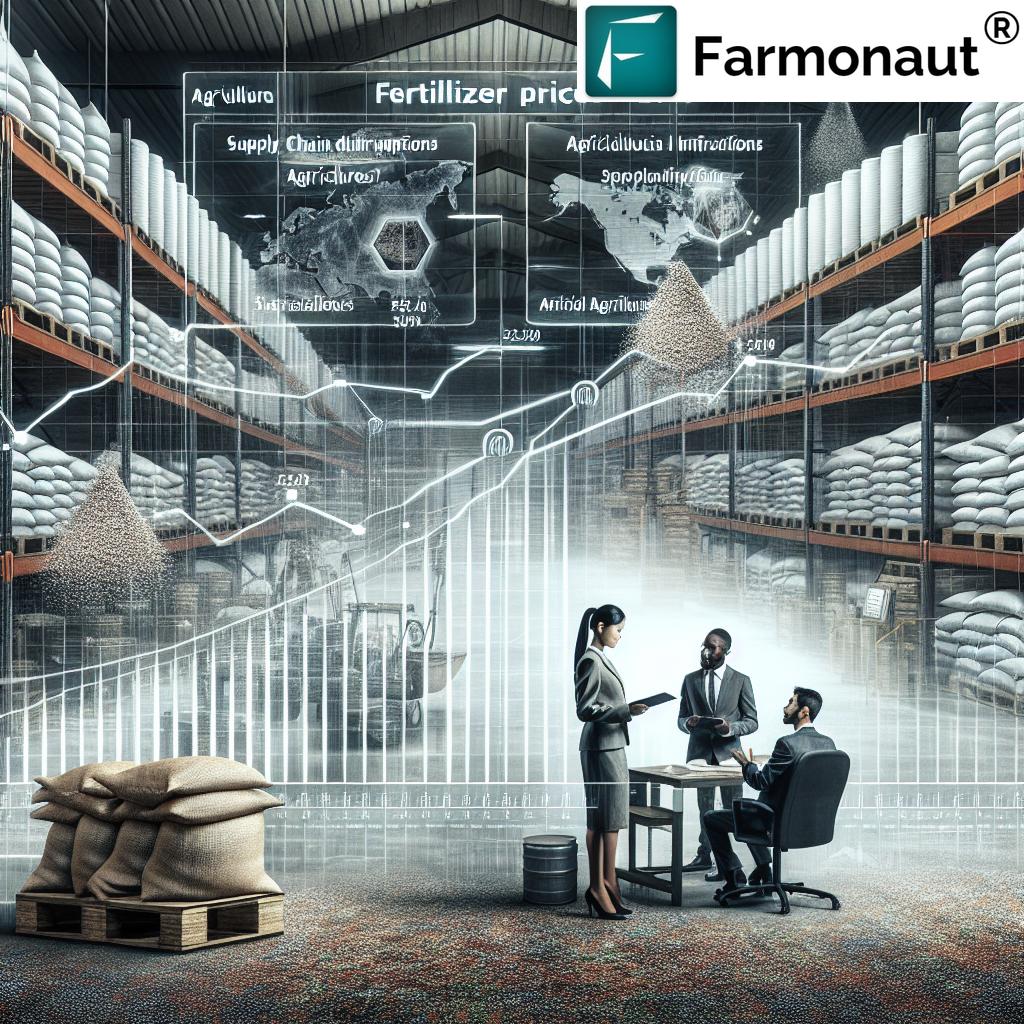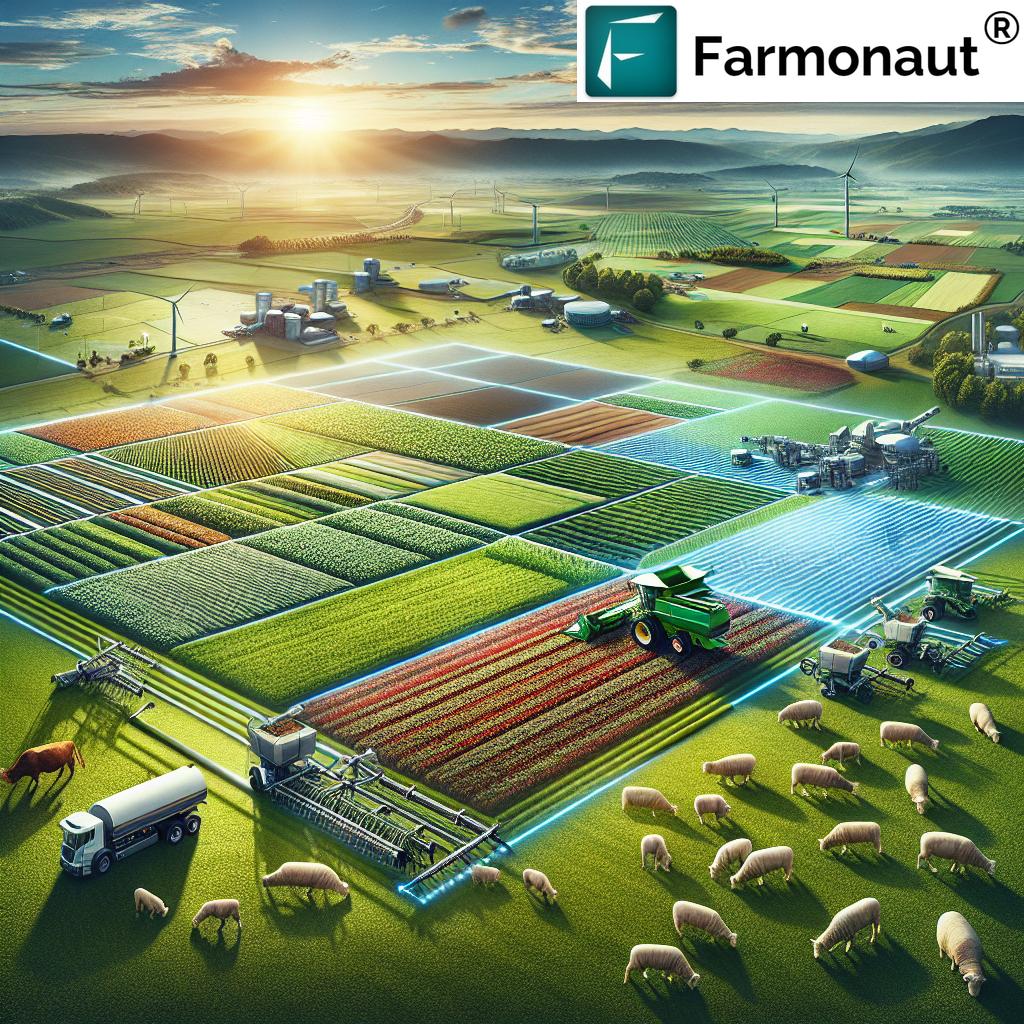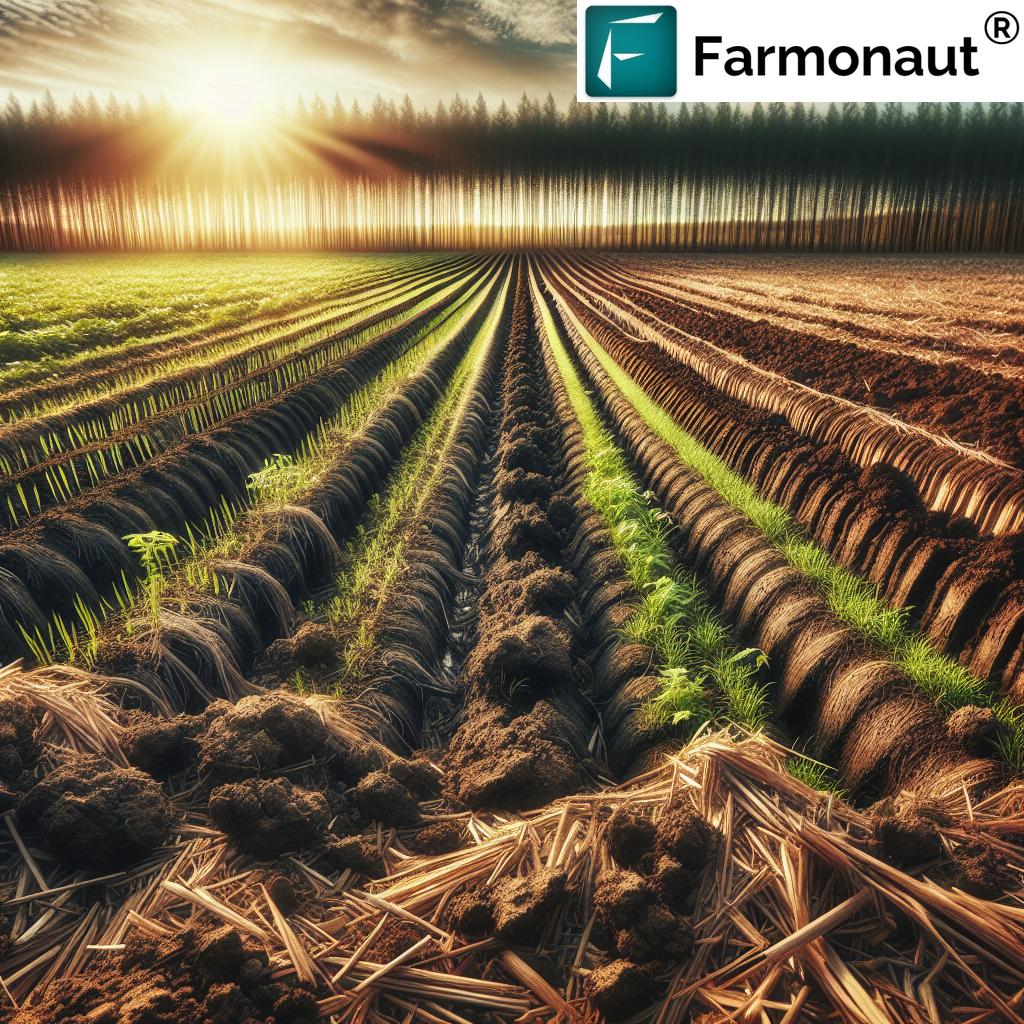Is Vertical Farming Organic? 7 Pros for Organic Agriculture
“In 2025, vertical farming could use up to 95% less water than traditional farming while boosting crop yields sustainably.”
Vertical Farming and Organic Agriculture: Exploring the Future of Sustainable Farming in 2025
As global populations continue to grow and urbanization intensifies, the need for fresh, nutritious, and sustainably produced food is at an all-time high. The agricultural sector is facing new challenges and opportunities with the emergence of vertical farming – a promising innovation that reimagines food production within urban environments. In this comprehensive guide, we thoroughly examine one of the most prevalent questions in modern agriculture: Is vertical farming organic? We also investigate organic farming vs inorganic farming, review the core sustainability principles shaping the future, and highlight the vertical farming pros that could define future food security in 2025 and beyond.
Introduction: Sustainability and Innovation in Agriculture
The future of agriculture is at a crossroads. On one side stands traditional organic farming, renowned for upholding natural inputs, avoiding synthetic fertilizers and pesticides, and promoting soil health and biodiversity. On the other hand, vertical farming has emerged as a high-tech, scalable method to grow crops vertically in controlled, indoor environments using hydroponics or aeroponics.
As we move toward 2025, questions like “Is vertical farming truly organic?”, “How does it stack up to traditional organic agriculture?”, and “Can it address global food demand sustainably?” have never been more critical.
What Makes Agriculture ‘Organic’?
To address is vertical farming organic, we must first define what it means for farming to be organic.
- Organic farming agriculture revolves around these core principles:
- Avoidance of synthetic pesticides and chemical fertilizers
- Natural inputs (compost, manure, biofertilizers)
- Maintaining soil health through crop rotations, cover crops, and minimal disturbance
- Promoting biodiversity and ecological balance
- Stringent organic certification standards to ensure compliance
According to organic certification regulations in many regions, one of the defining features is the soil-based cultivation of crops. The reliance on living soil for providing nutrients, supporting microbiome diversity, and promoting plant health is at the heart of many official definitions of organic farming.
Key Characteristics of Organic Farming
- Uses natural processes to improve soil fertility and reduce disease
- Emphasizes crop rotation, biological pest control, and minimal external inputs
- Strict avoidance of synthetic pesticides, herbicides, and chemical fertilizers
- Certification required to market produce as “organic” in most countries
Is Vertical Farming Organic? Unpacking the Compatibility
The question “Is vertical farming organic?” has become central as we explore agricultural innovation for 2025. Let’s break down the compatibility of vertical techniques with the organic farming definition:
- Vertical farming is often conducted in controlled indoor environments using hydroponics (nutrient-rich water) or aeroponics (nutrient mist), with no soil involved.
- Many organic certification standards require soil-based agriculture, therefore making it difficult for vertical farms using soilless systems to be officially labeled as organic, despite eliminating synthetic pesticides and minimizing chemical interference.
- Some vertical farms use organic nutrient solutions, such as those derived from compost teas or biofertilizers, to nourish crops and further eliminate synthetic substances.
- The complete elimination of synthetic pesticides by using controlled environments brings vertical farming closely in line with core organic principles.
However, most regions in 2025 still require soil cultivation for organic certification, so plenty of vertical farms cannot market their produce as truly “organic” despite adopting features of sustainable, chemical-free agriculture.
Vertical Farming: Meeting (Most) Organic Standards
While vertical farming is not always “certified organic,” it offers several features that align closely with organic agriculture:
- No synthetic pesticide use
- No genetically modified seeds (GMO), in most cases
- Reduced nutrient and chemical runoff
- Enhanced food safety and traceability
- Closed-loop water systems minimizing waste
- Ability to integrate organic nutrient sources
Organic Farming vs. Inorganic Farming: Vertical Solutions for Sustainability
Let’s examine organic farming vs inorganic farming in the context of vertical farming’s position as a future-forward method.
Organic Farming Characteristics
- Relies on natural processes, biological pest control, and crop rotations
- Yields are often lower compared to conventional or inorganic methods
- Labor costs are higher
- Focuses on long-term environmental health
Inorganic (Conventional) Farming Characteristics
- Uses synthetic fertilizers and pesticides to maximize output
- Can lead to soil degradation and reduced biodiversity
- Higher yields but at the risk of chemical runoff
Where Vertical Farming Fits In
- Transcends the dichotomy by using high-intensity production methods that produce higher yields per square meter with minimal land
- Reduces land use, water consumption, and nutrient runoff significantly
- Enables year-round crop production regardless of weather or soil quality
- Can be energy intensive due to artificial lighting and climate control. Environmental impact depends on the source of electricity
In summary, vertical farming offers a new model of food production that, while not always qualifying as “organic”, does provide many environmental benefits and solves some of the biggest challenges of both organic and inorganic agriculture.
7 Vertical Farming Pros for the Future of Organic Agriculture
By focusing on sustainability, resource efficiency, and reduction of chemical inputs, vertical farming supports the broader goals of organic agriculture in a modern context. Here are seven compelling vertical farming pros supporting its relevance for future food security:
-
Land Efficiency
Vertical farms dramatically increase production per square meter by utilizing stacked layers. This efficiency reduces pressure on arable land, making it ideal in the face of global land scarcity and urbanization.
Example: Organic vertical farms can grow up to 100 times more food per square meter than conventional soil-based farms.
-
Water Conservation
Advanced closed-loop hydroponic systems recycle water, reducing consumption by up to 90–95% compared to traditional farming. Water stress and scarcity are increasing concerns—vertical farming directly addresses this critical issue.
-
Pesticide-Free Produce
Controlled environments limit exposure to pests, reducing or entirely eliminating the need for chemical pesticides. This results in higher food quality and safety for consumers.
-
Year-Round Production
Crops are unaffected by climate change and seasonal fluctuations. This ensures a steady, reliable supply of fresh, nutritious food regardless of external weather conditions.
-
Urban Integration and Reduced Transportation Emissions
Locating vertical farms close to urban centers and consumers vastly reduces food miles, spoilage, and emissions associated with transportation. In 2025, this will be key to addressing the environmental impact of feeding growing cities.
-
Soil Degradation is Minimized
By moving agriculture out of fields and into soilless systems, vertical farming helps to preserve existing topsoil and restore biodiversity to surrounding areas.
-
Technological Integration for Future Sustainability
Vertical farming enables seamless integration with carbon footprinting solutions, AI-driven fleet management, and blockchain-based traceability platforms for transparency and operational efficiency.
“Organic vertical farms can grow up to 100 times more food per square meter than conventional soil-based farms.”
Vertical Farming vs. Traditional Organic Farming: Key Features & Sustainability Comparison Table
| Feature/Aspect | Vertical Farming (Estimated) |
Traditional Organic Farming (Estimated) |
Relevance for Future Food Security (2025) |
|---|---|---|---|
| Organic Certification Status | Rare (due to soil-free methods); aligns closely with organic principles | Standard in certified organic produce | Drives consumer trust; may require certification redefinition for future |
| Land Usage (ha/ton yield) | Up to 100x less land; high yield/area using stacked layers | Requires more land for same yield; yield depends on soil quality | Critical to mitigating global land scarcity & urban expansion |
| Water Consumption (liters/kg produce) | Up to 95% lower than conventional; closed recycling systems | Relatively higher; depends on weather, soil, and irrigation method | Vital for future areas facing water scarcity & climate change |
| Pesticide Use | Minimal to none; controlled indoor environment reduces pests | Limited, natural/biological options allowed | Reduces chemical residues and boosts food safety |
| Energy Consumption (kWh/kg) | High (mainly due to lighting & HVAC); improving with LED and renewables | Lower (main energy use is on machinery for field operations) | Depends on energy sourcing; transition to renewables is essential |
| Sustainability Rating (1–5) | 4 (high resource efficiency, pending renewable integration) | 3.5 (good biodiversity, land use can be improved) | Both are important pillars in resilient food systems |
| Pros for 2025 Food Security |
|
|
Hybrid and complementary methods will be key for global food security |
Sustainability, Control, and Challenges in Vertical Farming by 2025
As we move towards 2025, the sustainability of vertical farming hinges on how effectively it integrates renewable energy, advanced technology, and environmentally conscious policies.
Major Factors Enhancing Sustainability in Vertical Environments:
- Energy Optimization: Progressive use of LED grow lights and climate control aligned with solar, wind, or hydropower significantly reduces the carbon footprint of high-density urban farms.
- Water Technology: Closed-loop recirculation minimizes unnecessary consumption and runoff (up to 95% lower than field farming).
- Minimal Chemical Inputs: Controlled environments mean almost no synthetic pesticide or herbicide use, further aligning with the core goals of organic farming agriculture.
- Data-Driven Crop Management: AI and satellite solutions (example: Farmonaut’s real-time environmental impact tracking) allow for precision control, reducing waste and maximizing nutrient efficiency.
Key Sustainability Challenges Facing Vertical Farming
- Certification challenges: Soil-free systems currently struggle to achieve organic certification in many markets, limiting their marketing reach as “organic”.
- High Initial Costs: State-of-the-art systems, controlled environments, and artificial lighting require significant capital investment.
- Energy Use: Lighting (particularly if not sourced from renewables) remains the most energy-intensive aspect.
- Crop Diversity: Most vertical facilities currently focus on leafy greens and herbs. Expanding to grains or fruiting crops is still limited by cost and technological hurdles.
- Consumer Perception: Ongoing education is required so consumers appreciate chemical-free produce, even if it isn’t “certified organic.”
Is Vertical Farming the Future? Exploring the Potential for 2025 and Beyond
Is vertical farming the future? By 2025, vertical farming is set to become a vital complement to existing agriculture rather than a total replacement. Here’s why vertical farming’s potential as a pillar of sustainable food production will keep expanding:
- Food Security: Vertical systems deliver uninterrupted, year-round supply of high-value crops — a major advantage in rapidly urbanizing areas.
- Resource Scarcity Solutions: With increasing scarcity of arable land and water, vertical farming’s minimal land and water requirements are critical.
- Sustainable Urbanization: As cities grow, urban farms support short, efficient supply chains, dramatically reducing transportation emissions, food loss, and costs.
- Technological Synergy: Coupling with smart sensors, AI, and satellite monitoring (such as Farmonaut’s multispectral satellite monitoring) optimizes productivity, reduces losses, and enhances sustainability.
- Transparency and Traceability: Advanced blockchain technologies safeguard traceability and regulatory compliance, supporting consumer confidence and international standards.
- Renewable Integration: Ongoing advances in renewable energy integration continue to enhance vertical farming’s environmental credentials.
Farmonaut API Integrations for Advanced Monitoring
For developers and agricultural technology providers, Farmonaut’s API offers real-time, satellite-driven crop monitoring, vegetation health indexing (NDVI), and environmental tracking.
Developers can access full documentation here: API Developer Docs, streamlining the creation of custom dashboards and AI-driven advisory tools for large scale and urban farms alike.
Affordable Satellite-Driven Resource Management for Every Farm
Looking for scalable, cost-effective solutions to monitor, manage, and optimize your organic or vertical farm’s resource use?
Our subscription offerings are designed to make cutting-edge tools accessible for all agricultural stakeholders.
How Farmonaut Empowers Sustainable Agriculture & Food Security
At Farmonaut, our mission is to provide affordable, accessible, satellite-based insights for farmers, businesses, and governments worldwide. Our tools are transforming resource management for both traditional organic farms and innovative vertical agricultural systems.
Highlights of our platform include:
- Agricultural Satellite Monitoring: Multispectral imagery to monitor crop health, soil conditions, and field variability for all types of farming—vertical or traditional.
- AI-Powered Advisory (Jeevn): Real-time, tailored recommendations for maximizing production and sustainability in every climate and environment.
- Carbon Footprinting: Monitor your vertical or traditional organic farm’s greenhouse gas emissions, and take actionable steps towards climate-smart agriculture.
- Blockchain Traceability Solutions: Guarantee your produce’s journey from farm to consumer, building trust—essential for vertical and organic food markets.
- Fleet Management: Real-time logistics optimization for businesses moving produce from urban vertical farms or rural organic plots.
- Crop Loan and Insurance Verification: Secure your operations with reliable data for insurance and financing, reducing fraud and improving access for all food producers.
- Large Scale Farm Management Tools: Integrate vertical and organic plots for a holistic approach to sustainability and food security.
Our platform aims to enhance productivity, transparency, and sustainability—whether you are managing a single indoor vertical farm, an organic field, or a vast, digitally mapped agricultural landscape.
Frequently Asked Questions
Is vertical farming organic?
Vertical farming often does not qualify for official organic certification due to soil-free cultivation methods. However, it adopts many organic principles—such as eliminating synthetic pesticides, minimizing nutrient runoff, and using sustainable practices. It offers near-organic food alternatives and can be considered “organic in spirit.”
How does vertical farming compare to traditional organic farming in terms of sustainability?
Vertical farming uses significantly less water (up to 95% less) and can yield more crops per square meter using stacked layers. It eliminates many chemicals and reduces emissions through urban integration but can be energy-intensive unless powered by renewables. Both methods offer different yet complementary sustainability benefits.
Why can’t most vertical farms get organic certification?
Most regions’ organic farming certification standards require crops to be grown in soil. Since vertical farms typically use hydroponics or aeroponics (no soil involved), they cannot be officially certified as organic, despite their sustainable practices.
What are the main advantages of vertical farming for the future of food security?
Vertical farming offers efficient land and water use, minimal pesticide risk, year-round production, urban proximity, and reduced spoilage. This makes it critical for food security in growing, urbanized populations, particularly where land and water scarcity are severe.
Can you grow all types of crops in vertical farms?
Currently, leafy greens, herbs, and some fruits are the primary focus. New advances are gradually expanding the range of crops, but grains, root crops, and fruiting vegetables are less common due to space and cost limitations.
What is needed to make vertical farming entirely sustainable by 2025 and beyond?
The integration of renewable energy, improved lighting efficiency, and advanced resource management are key. Regulatory changes to allow “organic” labeling for soil-free but fully sustainable systems may also play a role as consumer demand evolves.
Conclusion
Is vertical farming organic? While the answer—by 2025—remains nuanced due to soil-based certification requirements, vertical farming’s assets position it as a near-organic, highly sustainable solution for future food security challenges. By leveraging high-efficiency land and water use, minimizing chemical interference, and advancing food safety and urban access, vertical farming tackles many of the world’s most acute agricultural challenges—from land scarcity to climate variability and global demand spikes.
As technological advances, environmental integration, and thoughtful standards continue to evolve, so too will the role of vertical farming. It will complement traditional organic and inorganic agriculture, not replace it. The future of sustainable food production will include many approaches—vertical farms, regenerative practices, innovative AI-driven resource management platforms (like Farmonaut), and advanced logistical tools all working in concert.
Together, these pillars offer optimism for nutritious, fresh, and sustainably produced food—meeting the needs of both growing cities and rural populations worldwide in 2025 and beyond.
Ready to future-proof your agricultural operation? Get started with advanced monitoring and sustainability solutions:
Related Reads:












